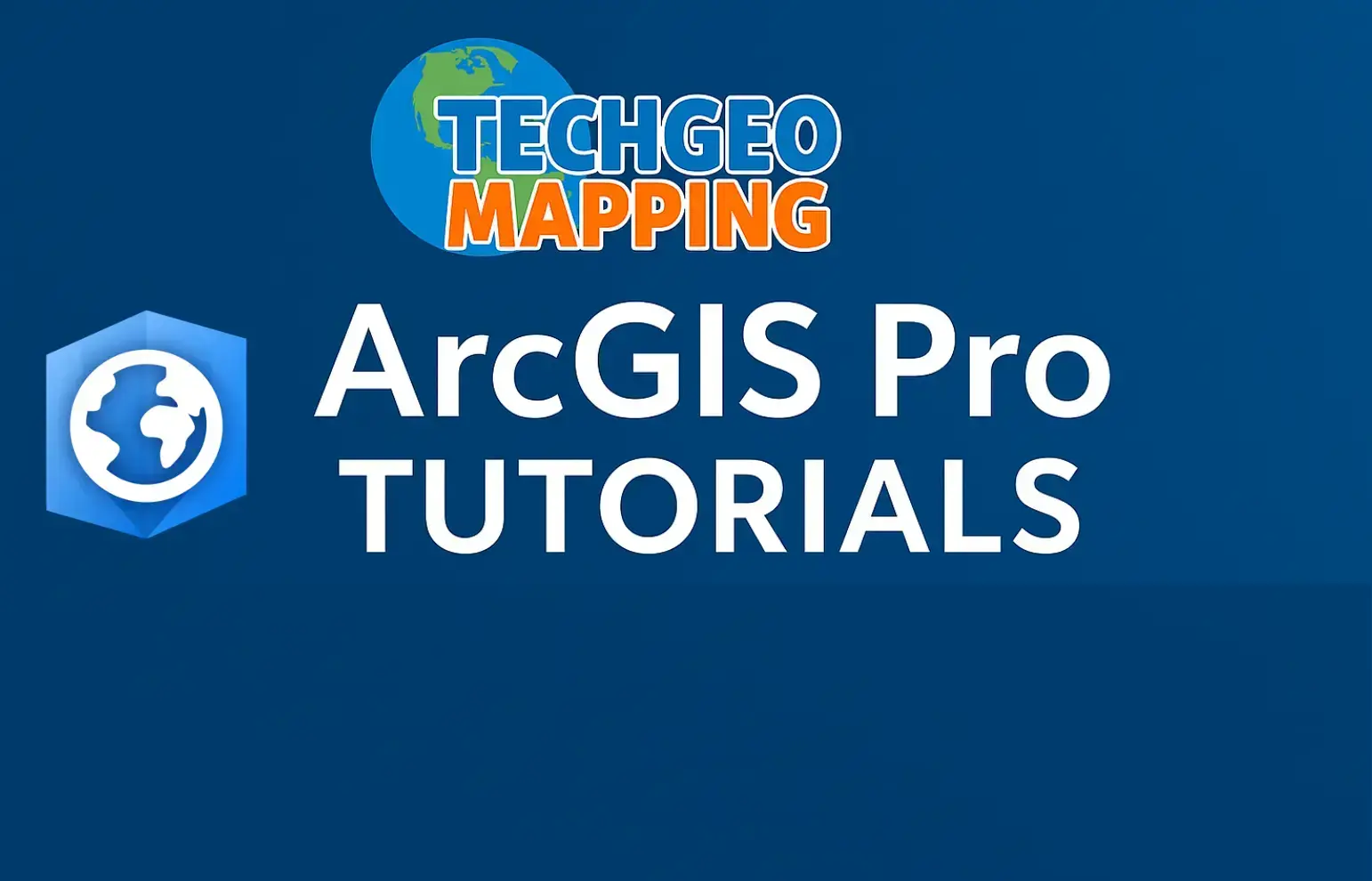ArcGIS Pro Tutorial: Create Advance Flood Simulation in ArcGIS Pro 3.3
You can see all the tutorials from here: Techgeo Academy.
ArcGIS Pro 3.3 introduces powerful new capabilities for hydrological modeling and flood simulation. This comprehensive tutorial will guide you through creating an advanced flood simulation using the latest tools and techniques available in the software.
Prerequisites
- ArcGIS Pro 3.3 or later
- 3D Analyst extension
- Spatial Analyst extension
- Hydrology tools license
- Digital Elevation Model (DEM) data
- Rainfall and watershed boundary data
Setting Up Your Project
- Create a new project in ArcGIS Pro
- Add your DEM data to the map
- Set the coordinate system to an appropriate projected coordinate system
- Enable necessary extensions (3D Analyst, Spatial Analyst)
- Create a geodatabase to store your simulation outputs
DEM Processing and Preparation
Proper DEM preparation is crucial for accurate flood modeling:
Filling Sinks
- Navigate to Spatial Analyst Tools > Hydrology > Fill
- Select your DEM as input
- Set output raster name (e.g., “Filled_DEM”)
- Run the tool to remove depressions that could interfere with flow direction
Flow Direction Calculation
- Go to Spatial Analyst Tools > Hydrology > Flow Direction
- Use the filled DEM as input
- Choose D8 method for flow direction calculation
- Save output as “Flow_Direction”
Watershed Delineation
Identifying watershed boundaries is essential for targeted flood analysis:
Flow Accumulation
- Use Spatial Analyst Tools > Hydrology > Flow Accumulation
- Input: Flow direction raster
- Output: “Flow_Accumulation”
- This shows the number of cells flowing into each cell
Stream Network Creation
- Apply Con tool to extract streams
- Set threshold (e.g., cells with flow accumulation > 1000)
- Output: “Stream_Network”
Watershed Boundary Delineation
- Identify pour points along streams
- Use Watershed tool with flow direction and pour points
- Generate watershed boundaries for your study area
Advanced Flood Simulation Setup
Rainfall-Runoff Modeling
ArcGIS Pro 3.3 enhances hydrological modeling capabilities:
- Import rainfall intensity data
- Define duration and frequency parameters
- Apply curve number method for runoff calculation
- Use time-series analysis for dynamic modeling
Floodplain Delineation
- Calculate stream order using Strahler method
- Create cross-sections along stream reaches
- Apply Manning’s equation for flow velocity
- Generate flood extent polygons for different return periods
3D Flood Visualization
Leverage ArcGIS Pro 3.3’s enhanced 3D capabilities:
Creating Flood Depth Rasters
- Subtract DEM from flood water surface elevation
- Apply colormap symbology for depth visualization
- Create classified depth ranges (0-1m, 1-3m, 3+m)
3D Scene Configuration
- Switch to 3D scene view
- Add vertical exaggeration for better visualization
- Apply realistic water surface rendering
- Create fly-through animations of flood scenarios
Advanced Analysis Features
Multi-Scenario Comparison
ArcGIS Pro 3.3 allows side-by-side scenario analysis:
- 10-year flood event
- 50-year flood event
- 100-year flood event
- Climate change projection scenarios
Risk Assessment Mapping
- Overlay population density data
- Integrate infrastructure layers
- Calculate affected areas and populations
- Generate risk classification maps
Generating Professional Outputs
Map Layout Creation
- Design comprehensive flood hazard maps
- Add proper legends and scale bars
- Include metadata and projection information
- Create inset maps for detailed areas
3D Animation Export
- Set keyframes for animation sequences
- Export high-quality video files
- Create interactive web scenes
- Generate reports with statistical summaries
Performance Optimization Tips
- Use appropriate DEM resolution for your study area
- Enable background processing for long operations
- Utilize parallel processing capabilities
- Manage raster pyramid levels for smooth visualization
- Regular project backup during complex analyses
Frequently Asked Questions
What are the system requirements for running advanced flood simulations in ArcGIS Pro 3.3?
ArcGIS Pro 3.3 requires at least 8GB RAM (16GB recommended), a modern multi-core processor, and dedicated graphics card with at least 2GB VRAM. For large-scale flood modeling, 32GB+ RAM is recommended.
Can I import real-time rainfall data into my flood simulation?
Yes, ArcGIS Pro 3.3 supports various data formats including real-time weather feeds. You can connect to weather API services or import data from rain gauges and weather stations.
How do I validate my flood simulation results?
Validation should include comparison with historical flood data, field surveys, and established hydraulic models. Cross-check with FEMA flood maps and local hydrological data when available.
What is the optimal DEM resolution for flood modeling?
This depends on your study area and required accuracy. Typically, 1-5 meter resolution for urban areas and 10-30 meters for regional studies. Higher resolution requires more processing power.
Can I share my flood simulation results with non-ArcGIS users?
Absolutely. ArcGIS Pro 3.3 allows export to various formats including PDF maps, video animations, web scenes (Scene Viewer), and interactive story maps that can be shared online.
How do I account for urban infrastructure in flood modeling?
Integrate building footprints, road networks, and drainage systems. Use impervious surface data to adjust runoff calculations and consider stormwater infrastructure in your hydraulic analysis.
What are the limitations of ArcGIS Pro flood modeling compared to specialized software?
While ArcGIS Pro provides comprehensive flood modeling capabilities, specialized software like HEC-RAS offers more detailed hydraulic modeling. ArcGIS Pro excels in spatial analysis, visualization, and integration with other GIS data.
How can I incorporate climate change projections into my flood simulation?
Use projected precipitation datasets from climate models, adjust intensity-duration-frequency curves, and run simulations with future climate scenarios. Consider sea-level rise for coastal areas.
Conclusion
ArcGIS Pro 3.3 provides powerful tools for creating sophisticated flood simulations that can inform emergency planning, infrastructure development, and environmental management. By following this tutorial, you can create professional-grade flood models that meet industry standards while taking advantage of GIS analysis capabilities.
Remember to validate your results, document your methodology, and continuously refine your models based on new data and feedback. Regular practice with different scenarios will help you master these advanced techniques and improve the accuracy of your flood simulations.






